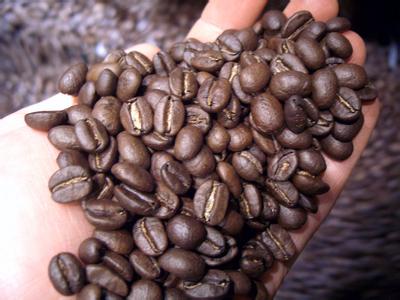Basic knowledge of boutique coffee the taste of coffee
Coffee trees are very similar to laurel trees and usually grow in areas between the Tropic of Cancer.

A coffee tree usually takes about three to four years to start bearing fruit. The fruit is a red berry, which can be separated into coffee beans after drying and removing the pulp.
Coffee beans can be found all over the world, and as long as the climate is right, they can grow as usual. These suitable places for growing coffee beans are located between the Tropic of Cancer and the Tropic of Cancer, and are collectively referred to as the "coffee growing zone". Coffee beans will grow into different varieties depending on farming methods, regional climate and various factors.
Before describing which country produces which coffee beans, let's first understand the various innate factors that can affect the texture of a cup of coffee. The so-called coffee taste is the combination and fusion of the aroma coffee can give to the nose and the taste it brings to the tongue.
The first impression a cup of coffee gives us is its "aroma", this aromatic and depressing smell can make people feel refreshed and thoroughly appreciate a cup of high quality coffee.
The second impression is the coffee "taste", coffee acidity is the main consideration of its taste, although the acidity of the whole nation is not directly related to the quality of coffee, but as the most intensive part of the coffee bean, acidity will bring different degrees of taste perception for coffee.
Finally, the coffee "taste" is where, although not the main determinant of coffee quality, but it can complement the coffee aroma and taste, can make people feel more real coffee beans texture.
Words generally used for coffee flavor
Richness
It refers to the texture and satisfaction of coffee.
Complexity (Complexity)
Used to describe the perception and experience of multiple tastes.
Balance
Coffee is very evenly distributed on all sides.
Regular Coffee Flavors
Bright, Dry, Snappy and Strong (Snappy typical of Central American coffee)
Caramelly
Sugar flavor or cereal paste flavor
Chocolatey
Taste suitable for drinking after meals, with the same taste of non-sweet vanilla and chocolate.
Delicate
a stable taste picked up by the tip of the tongue (often used to describe New Guinea's Alberta coffee)
Earthy
Soil flavor (often used to describe Sumatra coffee)
Fragrance
Aromas from flowers to spices
Juicy, Fruit
It has an aftertaste of berries and citrus
Aromatic alcohols (Mellows)
A round, creamy taste, usually low in acidity
Nutty
Taste suitable for drinking after dinner, similar to roasted nuts
Spicy
Unforgettable spice flavor, excellent smell
Sweet
Easy access
Wildness
An unusual and challenging taste (often used to describe Ethiopian coffee)
Wine (Winey)
A memorable after-dinner drink (often used to describe Kenya and Yemen coffee)
Important Notice :
前街咖啡 FrontStreet Coffee has moved to new addredd:
FrontStreet Coffee Address: 315,Donghua East Road,GuangZhou
Tel:020 38364473
- Prev

Boutique Coffee the rarest coffee with basic common sense
Nouak coffee is not easy to come by and is known as the rarest coffee in existence. Specifically, this kind of coffee comes from the Indonesian island of Sumatra, where coffee trees grow for a long time. When the coffee berries are ripe, local farmers deliberately put cats into coffee plantations and let them indulge. Not all cats are blessed to enjoy a coffee feast.
- Next

Coffee common sense the grinding process of coffee should also match the cooking method.
The quality of the minced coffee has a great influence on the next cooking process. The grinding process should also match the cooking method, which is the key to extracting the best flavor from coffee beans. The cooking method of coffee powder which is in contact with hot water for a long time requires thicker particles. If the coffee powder is too fine relative to the cooking method, the coffee will be too bitter, hard and overcooked.
Related
- Beginners will see the "Coffee pull flower" guide!
- What is the difference between ice blog purified milk and ordinary milk coffee?
- Why is the Philippines the largest producer of crops in Liberia?
- For coffee extraction, should the fine powder be retained?
- How does extracted espresso fill pressed powder? How much strength does it take to press the powder?
- How to make jasmine cold extract coffee? Is the jasmine + latte good?
- Will this little toy really make the coffee taste better? How does Lily Drip affect coffee extraction?
- Will the action of slapping the filter cup also affect coffee extraction?
- What's the difference between powder-to-water ratio and powder-to-liquid ratio?
- What is the Ethiopian local species? What does it have to do with Heirloom native species?

